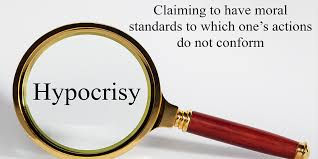Hukkat. Choose Life!
- Alex Israel

- Jun 29, 2017
- 3 min read
Updated: Jun 15, 2021

Parashat Hukkat opens with the ritual of the Red Heifer, a complicated purification process to purify a person who has come into contact with the dead. But,
Does death defile?
Can death generate some impure spirit?
Why do we need purification after we have touched the dead or resided in the same room as a corpse?
Rabbi Soloveitchik in his work, Halakhic Man, gives a fascinating perspective on this topic:
Judaism has a negative attitude toward death: a corpse defiles; a grave defiles; a person who has been defiled by a corpse is defiled for seven days and is forbidden to eat any sacred offerings or enter the Temple…
Many religions view the phenomenon of death as a positive spectacle … sanctify death and the grave because it is here that we find ourselves at the threshold of transcendence, at the portal of the world to come. Death is seen as a window filled with light, open to an exalted, supernal realm.
Judaism, however, proclaims that coming into contact with the dead precipitates defilement. Judaism abhors death, organic decay, and dissolution. It bids one to choose life and sanctify it.
Authentic Judaism as reflected in halakhic thought sees in death a terrifying contradiction to the whole of religious life. Death negates the entire magnificent experience of halakhic man… —when a person dies, he is freed from the commandments"
…The Halakhah is not at all concerned with a transcendent world. The world to come is a tranquil, quiet world that is wholly good, wholly everlasting, and wholly eternal, wherein a man will receive the reward for the commandments which he performed in this world. … Halakhic man prefers the real world to a transcendent existence because here, in this world, man is given the opportunity to create, act, accomplish, while there, in the world to come, he is powerless to change anything at all.
The task of the religious individual is bound up with the performance of commandments, and this performance is confined to this world, to physical, concrete reality, to clamorous, tumultuous life, pulsating with exuberance and strength. … Holiness means the holiness of earthly, here-and-now life.
Halakhic man … longs to bring transcendence down into this valley of the shadow of death—i.e. into our world—and transform it into a land of the living… He wishes to purify this world, not to escape from it. …His goal is not flight to another world that is wholly good, but rather bringing down that eternal world into the midst of our world.”
See what many religions have done to this world on count of their yearning to break through the bounds of concrete reality and escape to the sphere of eternity. They have been so intoxicated by their dreams of an exalted supernal existence that they have failed to hear the cries of "them that dwell in houses of clay" (Job 4:19), the sighs of orphans, the groans of the destitute. Had they not desired to unite with infinity and to merge with transcendence, then they might have been able to do something to aid the widow and orphan, to save the oppressed from the hand of the oppressor. There is nothing so physically and spiritually destructive as diverting one's attention from this world.” (Selections from Halakhic Man, pp 32-41)
Please discuss:
Is this the Judaism that you know?
Do you think that the defilement of the dead drives home Judaism’s “worldly” orientation.
Recall that the Jewish people became a people in Egypt. The Egyptian’s were obsessed with death and the afterlife. But the Torah is silent about an afterlife, and it asserts that death defiles? Maybe Rav Soloveitchik is showing us how Judaism had to reorient itself to a more world-focused perspective.
Shabbat Shalom!


























Comments